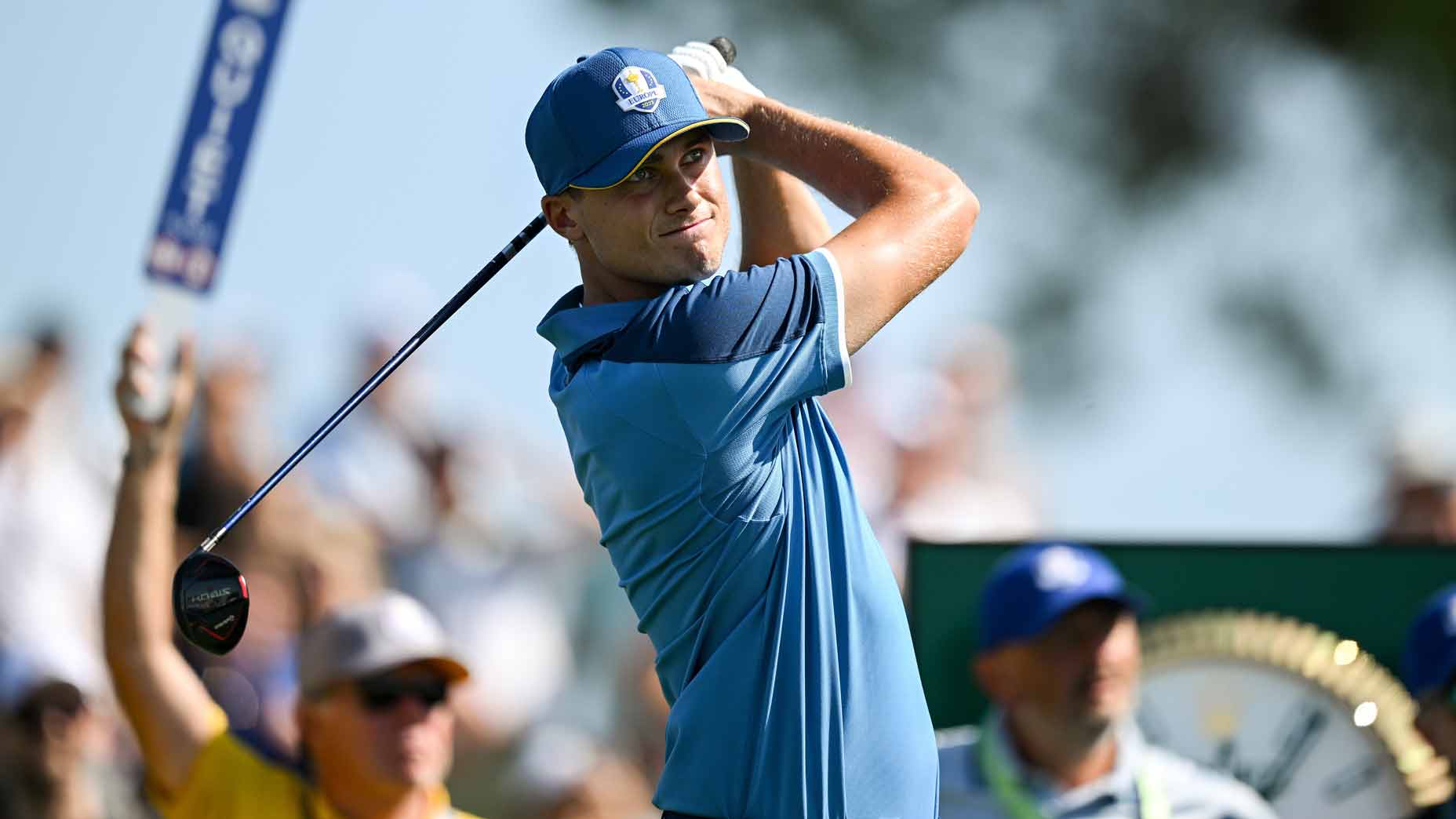Ludvig Aberg is the new kid on the block this week in Rome. At 23, he’s not the youngest competitor — that would be his teammate, 22-year-old Nicolai Højgaard — but he is the greenest pro of the bunch. Just three months ago, Aberg was competing collegiately for Texas Tech. Now, he’s getting ready to compete alongside the likes of Rory McIlroy and Jon Rahm in the Ryder Cup.
Aberg’s meteoric rise comes as no surprise to those who are familiar with the Swede’s game. As a four-year player for the Red Raiders, he won 10 tournaments, eventually ascending to the No. 1 spot in the World Amateur Golf Ranking. His play in the collegiate ranks earned him a PGA Tour card via PGA Tour U, allowing him to bypass Q School and the development tour path.
Once he arrived in the pro ranks, he didn’t miss a beat. In seven Tour starts, Aberg made six cuts, finishing in the top 25 four times and adding a T4 finish at the John Deere Classic. That success traveled with Aberg across the pond as he nabbed bis first professional victory at the European Masters earlier this month.
Aberg’s game is obviously well-rounded, but his most potent weapon is his driver. In his seven pro starts on the PGA Tour, he gained .92 strokes off the tee per round. If he’d played enough round to qualify, that number would’ve ranked second on Tour for the season, ahead of elite drivers such as Viktor Hovland, Cameron Young and McIlroy.
As Aberg tees it up in his first Ryder Cup, he’ll surely lean on that strength as he helps the Europeans try to keep up their 30-year streak of dominance on home soil.
Ahead of his rookie Ryder Cup campaign, Aberg shared with the media how he developed his elite driving skills, plus a few keys for maintaining it.
1. Power *then* accuracy
Accuracy is obviously a key skill with a driver in your hands, but developing power is paramount. Speed is often easier to develop at a young age, so learning how to generate ball speed as a kid is important.
“I tried to hit it as hard as I could and tried to narrow it down a little bit after that,” Aberg said. “Obviously, the driver is the most fun club to hit. It goes the furthest. I felt that way since I was probably 10, and I still feel that way. I like hitting my driver, and luckily it’s one of the better clubs in the bag, too.”
It’s always fun to hit a club you’re comfortable with, and Aberg is comfortable and elite with the longest club in the bag.
2. Don’t shape it too much
Everyone wants to hit a high draw (this scribe included), but aspiring to a specific ball flight is not always prudent to developing elite driving skills. As Aberg explained, it’s important to try to keep your ball flight somewhat neutral.
“I like to keep it a pretty neutral flight,” he said. “I don’t like to curve it too much. Sometimes you get too stuck on one side where you draw it too much or fade it too much. When I grow up, I try to hit it as straight as I could and take it from there.”
Shaping the ball is fun, but hitting it straight should be the goal.
3. Focus on solid contact
Gaining distance is important for becoming great off the tee, but that doesn’t mean you should just be swinging for the fences. For many recreational players, hitting the center of the face will produce more distance gains than generating a few extra mph of clubhead speed.
“Hitting the center of the face was a big thing for me,” Aberg said. “Hit it hard but keep it in the center of the face, and then yeah, take it from there.”
If you can find the center of the face and increase your smash factor, you’ll see distance gains without having to swing any harder.
